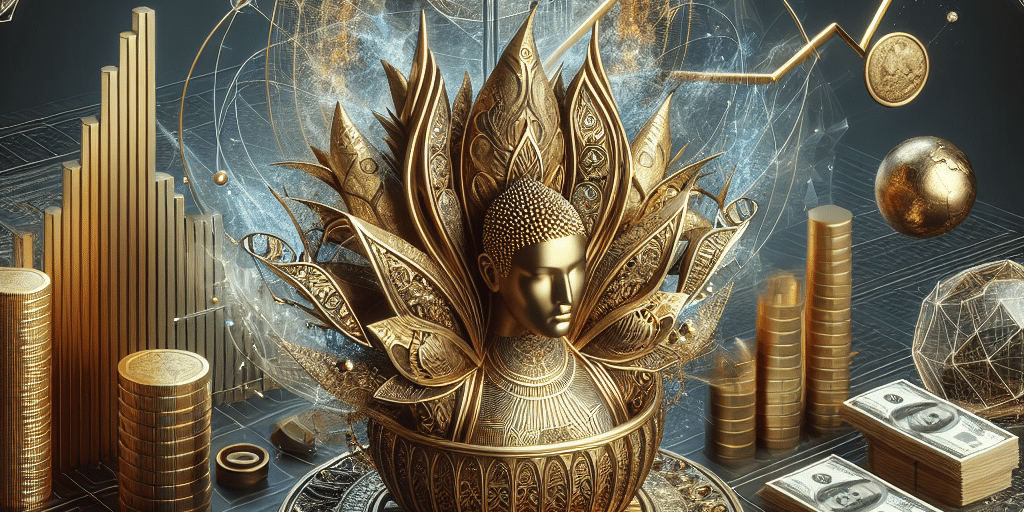Title: Sculptures as a Savvy Investment: Exploring the Artistic and Financial Benefits
In recent years, savvy investors and art enthusiasts alike have been turning their attention to sculptures, recognizing these captivating works of art not only for their aesthetic and cultural value but also for their potential as a lucrative investment. As tangible assets with historical significance and unique physical presence, sculptures offer an intriguing blend of artistic appeal and financial advantages that can enhance any investment portfolio.
The Artistic Allure of Sculptures
Sculptures have been an essential part of human artistic expression for millennia, offering a three-dimensional view into the minds of artists from various cultures and eras. They capture imagination and evoke emotions in profound ways, with their tangible presence speaking volumes that flat mediums often cannot match. From classic marble statues to contemporary installations, sculptures contribute to the beauty and character of any space, be it public or private.
Moreover, sculptures serve as cultural and historical markers, reflecting the values, beliefs, and technological advancements of their time. Collecting sculptures allows art enthusiasts to preserve and celebrate this heritage, making them custodians of cultural dialogues.
Financial Benefits of Investing in Sculptures
While the intrinsic artistic value of a sculpture is indisputable, the financial benefits of investing in these pieces of art are increasingly coming to the fore. Here’s why sculptures are gaining traction as a savvy investment option:
1. Appreciation Potential
Historically, sculptures have displayed a significant potential for appreciation. Established artists’ works, particularly those who have carved out an enduring legacy in the art world, tend to increase in value over time. As the market for art continues to grow globally, sculptures by notable artists often command high prices at auctions and in private sales.
2. Diversification
For investors looking to diversify their portfolios, sculptures offer an alternative asset class that is not directly tied to traditional financial markets. This diversification can mitigate risks, as art often behaves differently than stocks or real estate, potentially offering stability or growth during economic downturns.
3. Tangibility and Intrinsic Value
Unlike stocks or digital assets, sculptures are tangible assets with intrinsic value. Their physicality often translates to emotional resonances that digital investments cannot provide, creating a sense of ownership and legacy. Physical art can be insured and maintained, offering a level of security and longevity.
4. Tax Benefits
In some jurisdictions, there are tax advantages related to owning and donating art. Donating high-value sculptures to museums or charitable institutions can result in significant tax deductions, benefiting both the investor and the community.
5. Cultural Capital and Prestige
Owning sculptures, especially those by renowned artists, can elevate an individual’s cultural capital and prestige. This is particularly pertinent to investors who value social influence and the network opportunities afforded by art ownership.
Navigating the Market
Investing in sculptures does require a discerning eye and some expertise in art valuation. Prospective investors should:
-
Research Artists and Trends: Study the background and trajectory of artists whose works they are interested in. Understanding market trends and historical sales can inform better purchasing decisions.
-
Consult Experts: Art appraisers and consultants can provide invaluable insights into the potential long-term value of sculptures.
-
Assess Authenticity and Provenance: Ensure pieces have clear provenance and are authentic to avoid potential legal and financial pitfalls.
- Consider Maintenance: Sculptures, particularly those made of specific materials, may require maintenance and appropriate environmental conditions to preserve their value.
Conclusion
Sculptures, with their unique blend of artistic allure and financial promise, present an appealing opportunity for investors. While they bring the pleasure of art appreciation, they also offer potential benefits such as diversification, appreciation, and cultural prestige. As with all investments, diligence and well-informed decisions are key to successfully integrating sculptures into an investment strategy. Ultimately, for those willing to explore this captivating world, sculptures can be both a rewarding aesthetic choice and a shrewd financial move.







